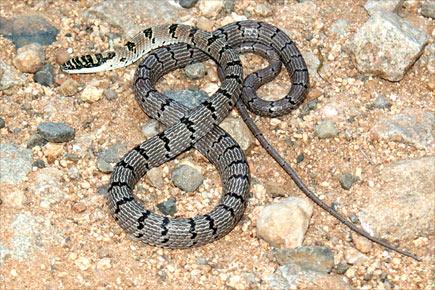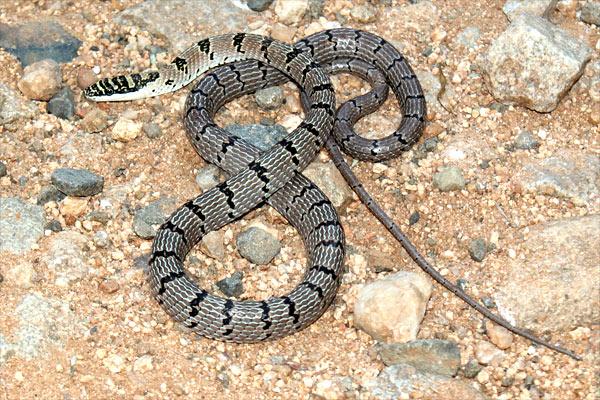A flying snake, known to be endemic to Sri Lanka, has been sighted in Andhra Pradesh's Seshachalam forests, forest officials and researchers said

Sri Lankan flying snake, Andhra Pradesh, flying snake, Sri Lanka, Seshachalam forests, Chrysopelea taprobanica, Seshachalam Biosphere Reserve, Chittoor district, Chalama, Tirumala
Hyderabad: A flying snake, known to be endemic to Sri Lanka, has been sighted in Andhra Pradesh's Seshachalam forests, forest officials and researchers said.
ADVERTISEMENT
According to researchers, this is the first time that Chrysopelea taprobanica has been sighted outside the island nation.

The species, known to be found in dry zone lowlands and parts of the intermediate climatic zones in Sri Lanka, was spotted at the Seshachalam Biosphere Reserve in Chittoor district.
It was about a year ago that the species was seen in Chalama, a core forest area about 25 km from the hill shrine of Tirumala.
Morphological studies and DNA tests proved that it was indeed Chrysopelea taprobanica, which glides by stretching its body into a flattened strip.
However, the researchers have revealed this now after Checklist, a journal of biodiversity data, mentioned it in its latest issue.
"We have the specimen and we sent this to many international biodiversity organisations," M. Ravikumar, the conservator of forests in the Wildlife Management Circle, Tirupati, told IANS.
Researchers Bubesh Guptha and N.V. Sivaram Prasad conducted the study under the guidance of Ravikumar, in collaboration with Simon T. Maddock of The Natural History Museum in London, and V. Deepak of the Centre for Ecological Studies at the Indian Institute of Science (IISc) in Bengaluru.
"An adult specimen of C. taprobanica was collected from the Seshachalam Biosphere Reserve of Andhra Pradesh, India, being the first record of this snake species from India, significantly extending the known range of distribution of the species," the international journal said in its 10th anniversary issue.
The forest official said the sighting of the flying snake was another evidence of the rich biodiversity of the Seshachalam forests.
He, however, said that unlike other animals, it was difficult to observe snakes as they were mostly nocturnal.
Guptha told IANS he also captured pictures of two more flying snakes spotted a few months ago.
He believes the species may have moved between Sri Lanka and the dry zones of peninsular India before the two regions got separated due to some natural events about 17,000 years ago.
According to the journal, an unidentified specimen suspected to be Chrysopelea taprobanica was photographed in 2000 by V. Santharam in a deciduous forest patch in Rishi Valley of Andhra Pradesh, but the specimen was not collected.
The Seshachalam hill range is part of the Eastern Ghats, which are a chain of broken hills in peninsular India. They have been less explored for their biodiversity compared to the Western Ghats.
The researcher feels the development could throw more light on the rich biodiversity of the Eastern Ghats.
"All talk about the Western Ghats but we have come across rare species in the Eastern Ghats as well. There is a need for more long-term research," Guptha told IANS.
The rare species found here in recent times include Slender Coral Snake (Calliophis melanurus), Elliot's Shieldtail (Uropeltis ellioti), Brown vine snake (Ahaetulla pulverulenta) and Nagarjunasagar Racer (Coluber bholanathi).
Ravikumar said the Seshachalam forests were rich in both flora and fauna. "There are several endemic species," he added.
 Subscribe today by clicking the link and stay updated with the latest news!" Click here!
Subscribe today by clicking the link and stay updated with the latest news!" Click here!






